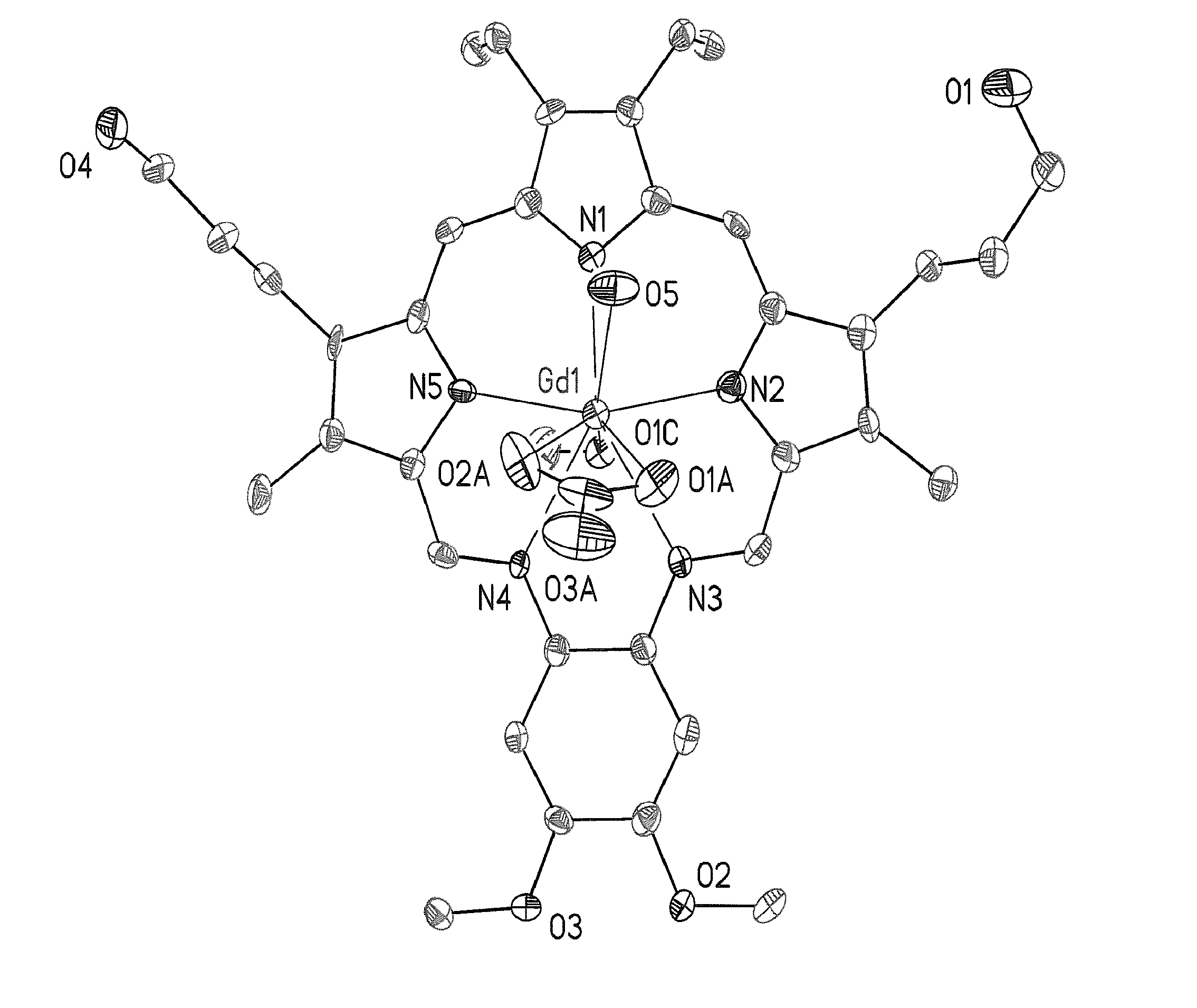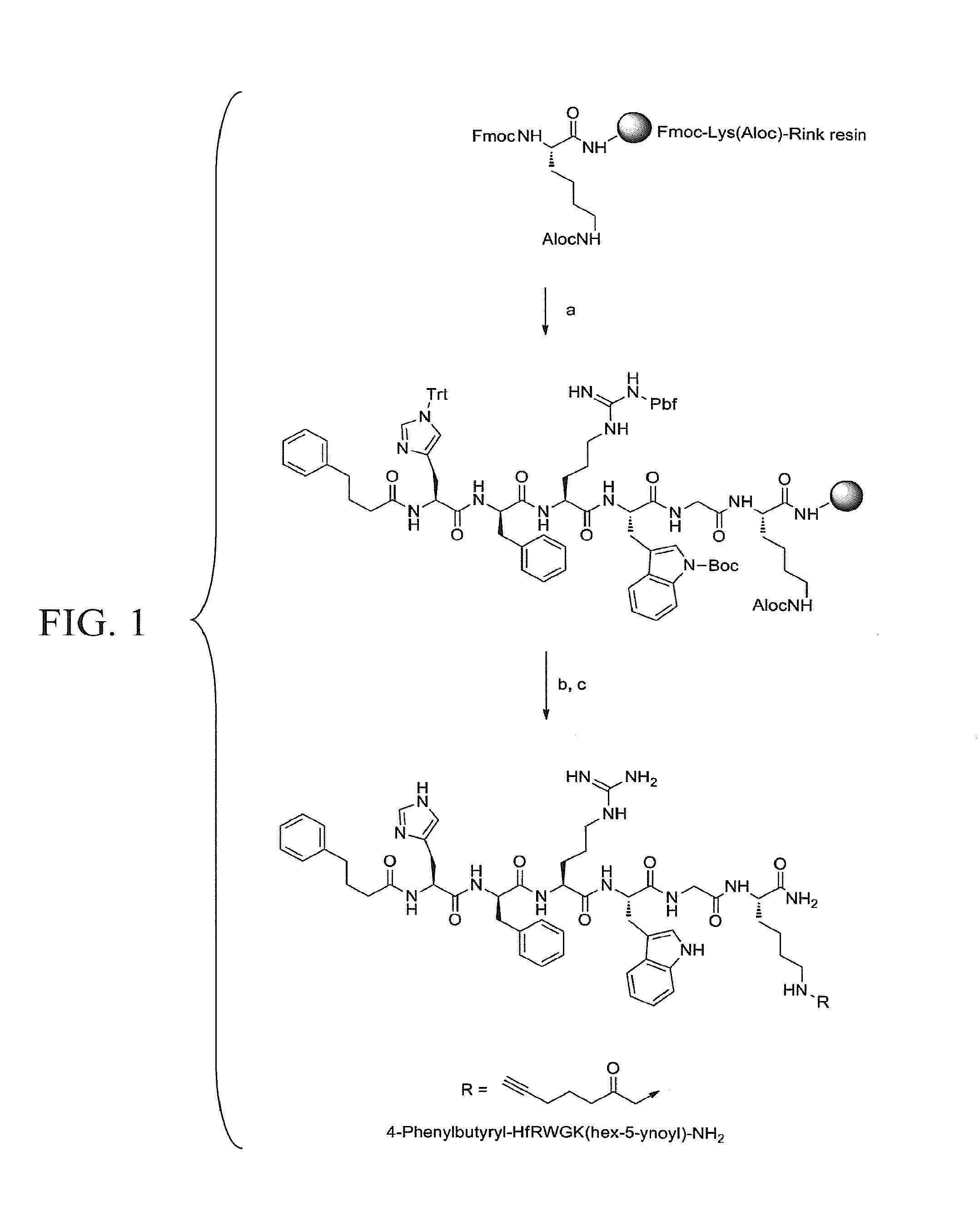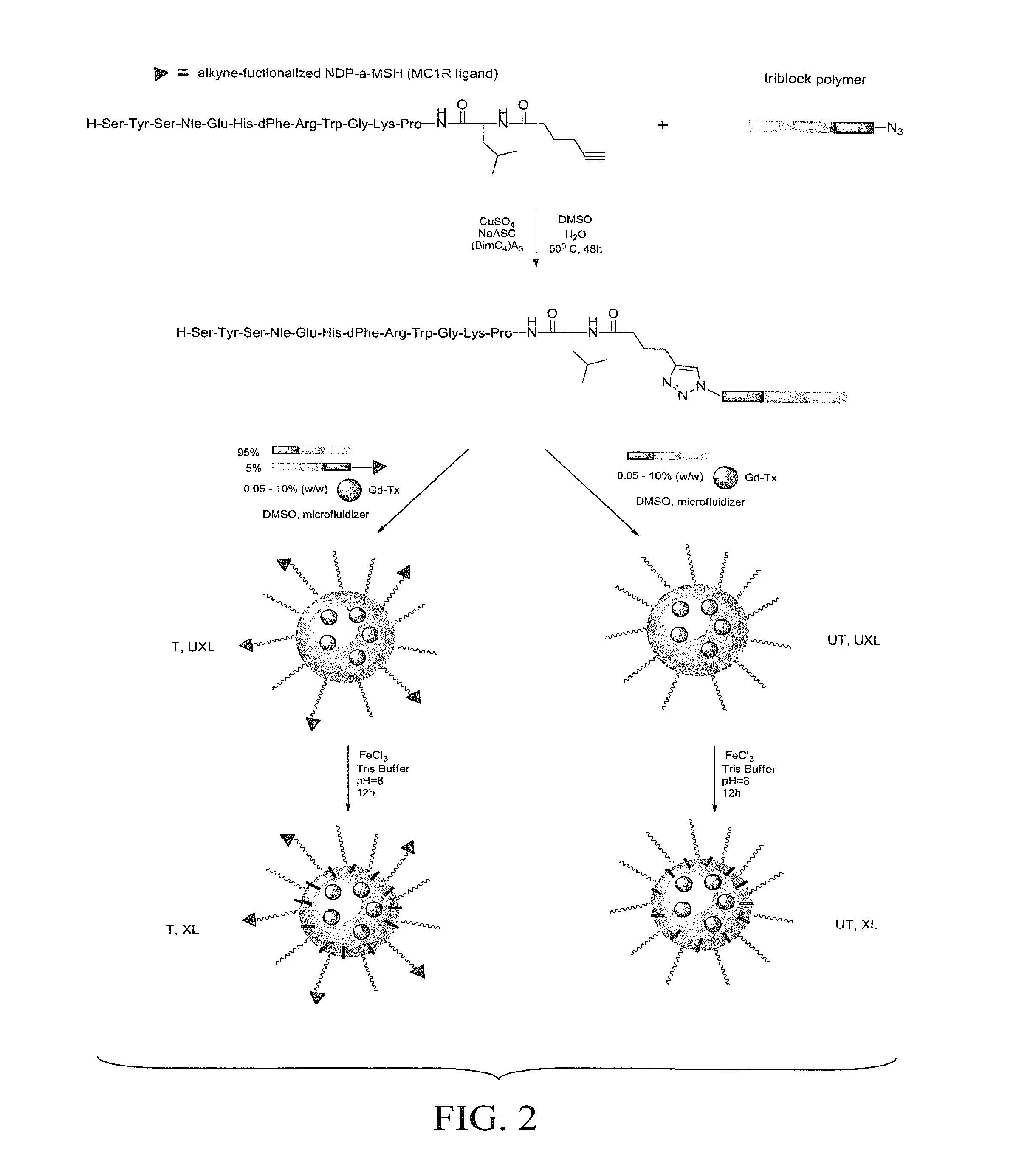Melanotropin ligands for skin care
a technology of melanotropin and skin care, applied in the direction of peptides, drug compositions, peptides, etc., can solve the problems of many failures and large nanoparticle size, and achieve high binding affinity, high expression, and high uptake value
Active Publication Date: 2015-10-08
THE ARIZONA BOARD OF REGENTS ON BEHALF OF THE UNIV OF ARIZONA
View PDF1 Cites 6 Cited by
- Summary
- Abstract
- Description
- Claims
- Application Information
AI Technical Summary
Benefits of technology
The patent describes a modified melanocortin 1 receptor (MC1R) peptide ligand that can be attached to various structures, such as micelles, polymers, or surfaces. The modified peptide ligand has a high binding affinity to the MC1R and can be used to target cells expressing this receptor. The attachment is achieved through a click reaction between the peptide ligand and a click functionality on the structure. The technical effect of this invention is the creation of a targeted agent that can selectively deliver a payload, such as a drug or contrast agent, to cells expressing the MC1R receptor.
Problems solved by technology
Although there have been ligands designed to attach to micelles and selectivity target cancer cells relative to healthy organs, many fail either from (1) a loss of affinity resulting from the attachment of small peptides to large micelles (2) an inherent instability of the system in vivo; or (3) a nanoparticle size that is too large.
Method used
the structure of the environmentally friendly knitted fabric provided by the present invention; figure 2 Flow chart of the yarn wrapping machine for environmentally friendly knitted fabrics and storage devices; image 3 Is the parameter map of the yarn covering machine
View moreImage
Smart Image Click on the blue labels to locate them in the text.
Smart ImageViewing Examples
Examples
Experimental program
Comparison scheme
Effect test
embodiment 1
[0156]A modified melanocortin 1 receptor (MC 1R) peptide ligand, comprising an MC1R peptide ligand coupled to a functionality.
embodiment 2
[0157]The modified MCIR peptide ligand of embodiment 1, wherein the functionality is an alkyne, azide, amine, aldehyde, thiol, alkene, ester, or maleimide.
embodiment 3
[0158]The modified MCIR peptide ligand of embodiment 1, wherein the functionality is coupled to the C-terminus of said MC1R ligand.
the structure of the environmentally friendly knitted fabric provided by the present invention; figure 2 Flow chart of the yarn wrapping machine for environmentally friendly knitted fabrics and storage devices; image 3 Is the parameter map of the yarn covering machine
Login to View More PUM
 Login to View More
Login to View More Abstract
A MC1R peptide ligand-elastic vesicle complex for preventing skin maladies. The MC1R peptide ligand is modified by coupling the melanocortin 1 receptor (MC1R) ligand to a functionality or linker, such as a click functionality, for conjugation to a surface or agent. The modified MC1R peptide ligand can be coupled, e.g., via a click reaction with a complementary click functionality attached, to a moiety to form an MC1R-targeted agent. Drugs, contrast agents, polymers, particles, micelles, elastic vesicles, surfaces of larger structures, or other moieties can be targeted to the MC1R. The MC1R peptide ligand-elastic vesicle complex is prepared as a patch or viscous emulsion that can be applied to human skin.
Description
CROSS REFERENCE[0001]This application in a continuation-in-part of and claims priority to U.S. patent application Ser. No. 14 / 117,949 filed on Nov. 15, 2013, which claims priority to PCT Application No. PCT / US12 / 38425 filed on May 17, 2012, which claims priority U.S. Provisional Patent Application No. 61 / 618,114 filed on Mar. 30, 2012, U.S. Provisional Patent Application No. 61 / 531,357 filed on Sep. 6, 2011, U.S. Provisional Patent Application No. 61 / 487,245 filed on May 17, 2011, and U.S. Provisional Patent Application No. 61 / 487,239 filed on May 17, 2011, the specification(s) of which is / are incorporated herein in their entirety by reference, including any figures, tables, nucleic acid sequences, amino acid sequences, and drawings.GOVERNMENT SUPPORT[0002]This invention was made with government support under Grant No. R01 GM108040, awarded by the National Institutes of Health (NIH). The government has certain rights to the invention.BACKGROUND OF THE INVENTION[0003]The incidence of...
Claims
the structure of the environmentally friendly knitted fabric provided by the present invention; figure 2 Flow chart of the yarn wrapping machine for environmentally friendly knitted fabrics and storage devices; image 3 Is the parameter map of the yarn covering machine
Login to View More Application Information
Patent Timeline
 Login to View More
Login to View More Patent Type & Authority Applications(United States)
IPC IPC(8): C07K7/08
CPCC07K7/08C07K14/723C07K14/68C07K14/685A61K9/0014A61K47/24A61K9/107A61K9/7084A61K38/10A61K9/00A61L15/00
Inventor CAI, MINYINGHRUBY, VICTOR J.SHELBY, SEAN
Owner THE ARIZONA BOARD OF REGENTS ON BEHALF OF THE UNIV OF ARIZONA
Features
- R&D
- Intellectual Property
- Life Sciences
- Materials
- Tech Scout
Why Patsnap Eureka
- Unparalleled Data Quality
- Higher Quality Content
- 60% Fewer Hallucinations
Social media
Patsnap Eureka Blog
Learn More Browse by: Latest US Patents, China's latest patents, Technical Efficacy Thesaurus, Application Domain, Technology Topic, Popular Technical Reports.
© 2025 PatSnap. All rights reserved.Legal|Privacy policy|Modern Slavery Act Transparency Statement|Sitemap|About US| Contact US: help@patsnap.com



